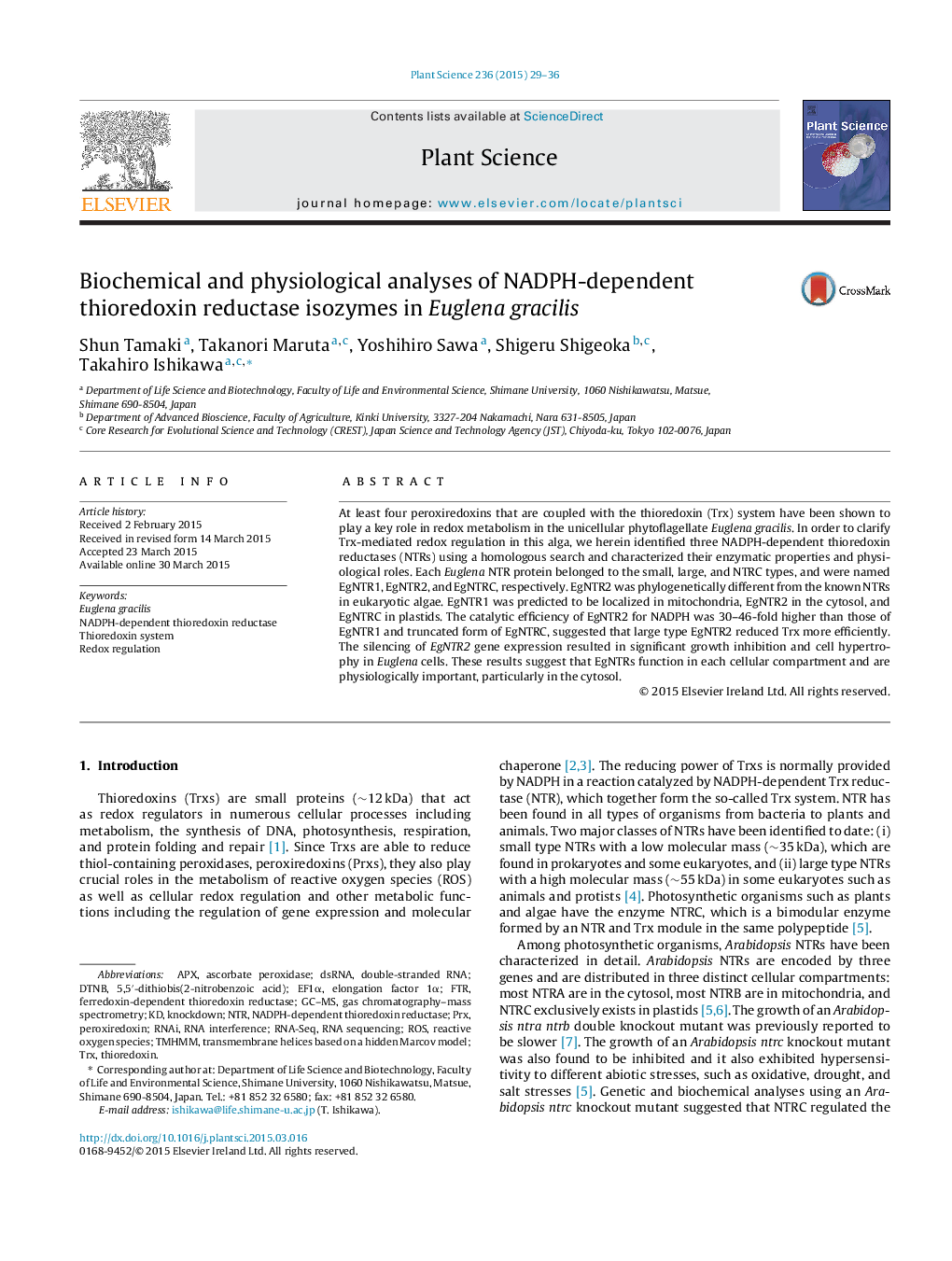| کد مقاله | کد نشریه | سال انتشار | مقاله انگلیسی | نسخه تمام متن |
|---|---|---|---|---|
| 2017018 | 1542053 | 2015 | 8 صفحه PDF | دانلود رایگان |

• We identified three EgNTR genes in a phytoflagellate Euglena gracilis.
• EgNTRs were predicted to be localized in distinct cellular compartments.
• All recombinant EgNTRs act as NTR enzymes in vitro.
• EgNTRs are physiologically important, particularly in the cytosol.
At least four peroxiredoxins that are coupled with the thioredoxin (Trx) system have been shown to play a key role in redox metabolism in the unicellular phytoflagellate Euglena gracilis. In order to clarify Trx-mediated redox regulation in this alga, we herein identified three NADPH-dependent thioredoxin reductases (NTRs) using a homologous search and characterized their enzymatic properties and physiological roles. Each Euglena NTR protein belonged to the small, large, and NTRC types, and were named EgNTR1, EgNTR2, and EgNTRC, respectively. EgNTR2 was phylogenetically different from the known NTRs in eukaryotic algae. EgNTR1 was predicted to be localized in mitochondria, EgNTR2 in the cytosol, and EgNTRC in plastids. The catalytic efficiency of EgNTR2 for NADPH was 30–46-fold higher than those of EgNTR1 and truncated form of EgNTRC, suggested that large type EgNTR2 reduced Trx more efficiently. The silencing of EgNTR2 gene expression resulted in significant growth inhibition and cell hypertrophy in Euglena cells. These results suggest that EgNTRs function in each cellular compartment and are physiologically important, particularly in the cytosol.
Journal: Plant Science - Volume 236, July 2015, Pages 29–36